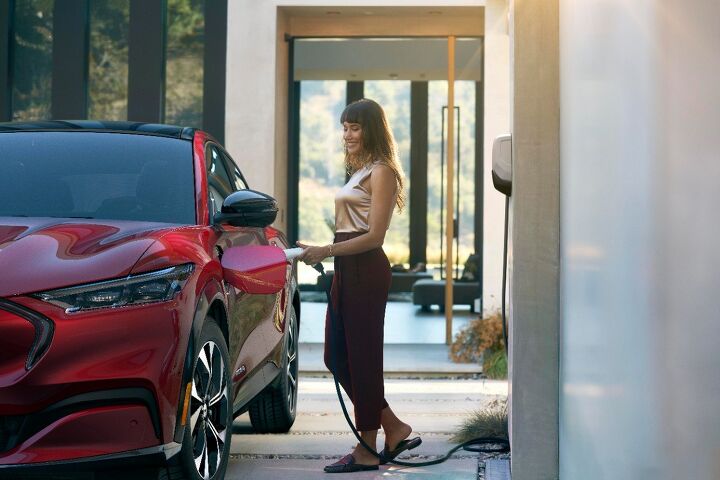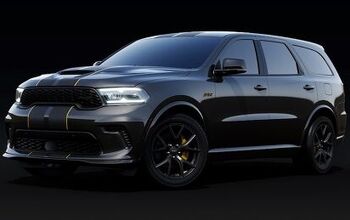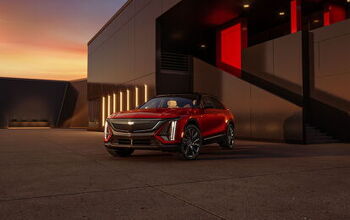BMW, Ford, Honda to Form New EV Charging Company

Ford, Honda, and BMW have announced plans to create a new “vehicle-to-grid company” that’s aimed at standardizing vehicle charging via a singular platform. The service also seeks to return excess energy to the electrical grid, effectively converting EVs into publicly shared batteries.
The business will be known as ChargeScape and, according to the automakers' press release, seeks to “create a single platform that will seamlessly connect electric utilities, automakers and their interested EV customers to manage energy usage for a broad pool of EVs.” The scheme could be one way of addressing concerns that modern power grids couldn’t endure widespread electric vehicle usage while helping to position the involved companies in an industry that’s being heavily incentivized by the government.
The company is still pending regulatory approvals, as we used to be concerned about corporate monopolies and are bound by tradition to pretend that still happens. Assuming ChargeScape is given the green light to move ahead, the trio plans to have equal shares and for the business to get rolling in 2024.
While EV charging companies owned by vehicle manufacturers are hardly new, ChargeScape is hoping to set itself apart by focusing on sharing the energy stored in their EV batteries with the electric grid — especially during periods of peak demand. Logistically, this would help soften the blow for public utilities hoping to deliver energy when demand surges throughout the day. But customers would also benefit by having the ability to sell back stored energy using a vehicle equipped with bidirectional charging capabilities which can be recouped at a lower price later on.
Though whether that theory plays out as advertised remains to be seen. Engineers have discussed the assumed need for localized energy storage as the demand for electricity grows and tapping into EVs could be a clever way of avoiding having to construct warehouse-sized battery hubs. This could likewise help circumvent some of the ecological issues associated with battery production and disposal by reducing the total number required to keep the energy grid functioning. But the premise of someone contentedly offloading battery range seems unlikely unless there’s a true financial incentive and customers feel absolutely certain there will be enough power left over for them when needed.
ChargeScape plans on addressing this by offering equipment that would help people manage energy sales during peak demand periods while also scheduling charging times during off-peak times. This could even be done by the company itself, rather than having customers set their own preferred schedules. Of course, this opens up the door to some of the unsavory aspects of smart home appliances that wrangle control away from the customer.
“Electric grid reliability and sustainability are the foundation for an EV powered future,” said Thomas Ruemenapp, Vice President, Engineering, BMW of North America. “ChargeScape aims to accelerate the expansion of smart charging and vehicle-to-everything solutions all over the country, while increasing customer benefits, supporting the stability of the grid and helping to maximize renewable energy usage. We’re proud to be a founding member of ChargeScape and are looking forward to the opportunities this collaboration will create.”
The companies are hoping to sell the concept as a way to help “decarbonize” the energy grid. ChargeScape will allegedly help “reduce EV customers’ personal carbon footprints” by utilizing electricity stemming from renewables like wind and solar. However, it’s not clear how that would work in parts of the country that are heavily reliant on other forms of energy production.
“Electric vehicles are unlocking entirely new benefits for customers that can save them money while supporting grid resiliency and increase the use of clean, renewable energy,” stated Bill Crider, global head of charging and energy services for the Ford Motor Company. “ChargeScape will help accelerate the true potential of the EV revolution by providing significant benefits to both utilities and EV customers through smart vehicle-to-grid services.”
You’ll notice a preponderance of buzz terms that have become commonplace within the automotive sector over the last decade. But the public seems more skeptical than ever these days, with some individuals now shying away whenever a business starts discussing smart devices, sustainability, stakeholders, and claims about de-carbonization.
“As Honda seeks to achieve our global goal of carbon neutrality, we are counting on this platform to create new value for our customers by connecting EVs to electric utilities, strengthening grid resources and reducing CO2 emissions,” suggested Jay Joseph, vice president of Sustainability and Business Development, American Honda Motor Co. “With automakers accelerating toward the electrified future, we must find solutions like ChargeScape that enable all stakeholders to work together for the good of our customers, society and our industry by enabling greater use of renewable energy for and from mobility.”
It’s your author’s assumption that the above companies have seen how well-positioned Tesla has managed to become by way of having its proprietary Supercharger network and want a piece of the pie. Nearly a dozen brands have already agreed to adopt Tesla’s charging standards and the company has since begun opening its network to vehicles not wearing its emblem.
Ford, Honda, and BMW anticipate leveraging the telematics procured by selling vehicles that tabulate and transmit massive amounts of information back to their data centers. While that should help ChargeScape function without Wi-Fi-connected charging stations, it could represent a rather massive conflict of interest.
Imagine if automakers also owned gas stations and enjoyed a steady stream of information about everything your vehicle was doing at all times, including exactly when, where, and how you were refueling. That’s effectively the direction this is all heading, just with fueling stations being replaced by EV charging points (including the one you’ve installed in your home). It seems like the above could qualify for antitrust enforcement. But your author is not qualified to provide legal advice and we seem to live in an era where corporate monopolies are relatively commonplace.
Whatever the future holds, the involved companies have expressed their desire to see the other automakers “join in and fully unlock opportunities provided by ChargeScape’s grid service offerings once the company is fully operational.”
[Image: Ford Motor Co.]
Become a TTAC insider. Get the latest news, features, TTAC takes, and everything else that gets to the truth about cars first by subscribing to our newsletter.

A staunch consumer advocate tracking industry trends and regulation. Before joining TTAC, Matt spent a decade working for marketing and research firms based in NYC. Clients included several of the world’s largest automakers, global tire brands, and aftermarket part suppliers. Dissatisfied with the corporate world and resentful of having to wear suits everyday, he pivoted to writing about cars. Since then, that man has become an ardent supporter of the right-to-repair movement, been interviewed on the auto industry by national radio broadcasts, driven more rental cars than anyone ever should, participated in amateur rallying events, and received the requisite minimum training as sanctioned by the SCCA. Handy with a wrench, Matt grew up surrounded by Detroit auto workers and managed to get a pizza delivery job before he was legally eligible. He later found himself driving box trucks through Manhattan, guaranteeing future sympathy for actual truckers. He continues to conduct research pertaining to the automotive sector as an independent contractor and has since moved back to his native Michigan, closer to where the cars are born. A contrarian, Matt claims to prefer understeer — stating that front and all-wheel drive vehicles cater best to his driving style.
More by Matt Posky
Latest Car Reviews
Read moreLatest Product Reviews
Read moreRecent Comments
- Steve S. Steve was a car guy. In his younger years he owned a couple of European cars that drained his bank account but looked great and were fun to drive while doing it. This was not a problem when he was working at a good paying job at an aerospace company that supplied the likes of Boeing and Lockheed-Martin, but after he was laid off he had to work a number of crummy temp jobs in order to keep paying the rent, and after his high-mileage BMW was totaled in an accident, he took the insurance payout and decided to get something a little less high maintenance. But what to get? A Volkswagen? Maybe a Volvo? No, he knew that the parts for those were just as expensive and they had the same reputation for spending a lot of time in the shop as any other European make. Steve was sick and tired of driving down that road."Just give me four wheels and a seat," said Steve to himself. "I'll buy something cooler later when my work situation improves".His insurance company was about to stop paying for the rental car he was driving, so he had to make a decision in a hurry. He was not really a fan of domestics but he knew that they were generally reliable and were cheap to fix when they did break, so he decided to go to the nearest dealership and throw a dart at something.On the lot was a two year old Pontiac Sunfire. It had 38,000 miles on it and was clean inside and out. It looked reasonably sporty, and Steve knew that GM had been producing the J-car for so long that they pretty much worked the bugs out of it. After taking a test drive and deciding that the Ecotec engine made adequate power he made a deal. The insurance check paid for about half of it, and he financed the rest at a decent rate which he paid off within a year.Steve's luck took a turn for the better when he was offered a job working for the federal government. It had been months since he went on the government jobs website and threw darts at job listings, so he was surprised at the offer. It was far from his dream job, and it didn't pay a lot, but it was stable and had good benefits. It was the "four wheels and a seat" of jobs. "I can do this temporarily while I find a better job", he told himself.But the year 2007 saw the worst economic crash since the Great Depression. Millions of people were losing their jobs, the housing market was in a free fall, people were declaring bankruptcy left and right, and the temporary job began to look more and more permanent. Steve didn't like his job, and he hated his supervisors, but he considered himself lucky that he was working when so many people were not. And the federal government didn't lay people off.So he settled in for the long haul. That meant keeping the Sunfire. He didn't enjoy it, but he didn't hate it either, and it did everything he asked of it without complaint.Eventually he found a way to tolerate his job too, and he built seniority while paying off his debts. There was a certain feeling of comfort and satisfaction of being debt-free, and he even began to build some savings, which was increasingly important for someone now in their forties.Another bit of luck came a few years later when Steve's landlord decided to sell the house Steve was renting, at the bottom of the housing market, and offered it to Steve for what he had in it. Steve's house was small and cramped, and he didn't really like it, but thanks to his savings and good credit he became a homeowner in an up and coming neighborhood.Fourteen years later Steve was still working that temporary job, still living in that cramped little house that he now hated, and still drove the Sunfire because it wouldn't die. For years now he dreamed of making a change, but then the pandemic happened and threw the economy and life in general into chaos. Steve weathered the pandemic, kept his job when millions of people were losing theirs, and sheltered in place in that crummy little house, with Netflix, HBO, and a dozen other streaming services keeping him company, and drove to and from work in the Sunfire because it was four wheels and a seat and that's all he needed for now.Steve's life was secure, but a kind of dullness had set in. He existed, but the fire went out; even when the pandemic ended and life returned to normal Steve's life went on as it had for years; an endless Groundhog Day of work, home, work, home. He never got his real-estate license or finished college and got his bachelor's, never got a better job, never used his passport to do some traveling in Europe. He lost interest in cars. "To think how much money I wasted on hot cars when I was younger", he said to himself. He never married and lost interest in dating. "No woman would want me anyway. I've gotten so dull and uninteresting that I even bore myself".Eventually the Sunfire began to give trouble. With 200,000 miles on the clock it was leaking oil, developing electrical gremlins, and wallow around on blown-out shocks. Steve wasn't hurting for money and thought about treating himself to a new car. "A BMW 3-series, maybe. Or maybe an Alfa Romeo Giulia!" He began to peruse the listings on Autotrader. "Maybe this is just what I need to pull out of this funk. Put a little fun back in my life. Yeah, and maybe go back to the gym, and who knows, start dating again and do some traveling while I'm still young enough to enjoy it!"Then his father passed away and left him a low-mileage Ford. Steve didn't like it or hate it, but it was four wheels and a seat, and that's all he needed right now."Is it too late to have a mid-life crisis?" Steve thought to himself. For what he needed more than that stable job, that house with an enviably small mortgage payment, and that reliable car was a good kick in the hindquarters. "What the hell am I afraid of? I should be afraid that things will never change!"But the depression was like a drug, a numbness that they call "dysthymia"; where you're neither here or there, alive or dead, happy or sad. It was a persistent overcast, a low ceiling that kept him grounded. The Sunfire sat in his driveway getting buried by the needles from his neighbor's overhanging pine trees which were planted right on the property line. "Those f---ing pine trees! That's another thing I hate about this damn house!" Eventually the Sunfire wouldn't start. "I don't blame you", he said to the car as he trudged past it to drive the Ford to another Groundhog Day at that miserable job.
- Yuda Cool. Cept we need oil and such products. Not just for fuel but other stuff as well. The world isn't exactly ready to move to wind and solar and whatever other bs, the technology simply isn't here yetNot to mention it's too friggin expensive, the equipment is still too niche and expensive as it stands
- Rna65689660 Picked up my wife’s 2024 Bronco Sport Bad Lands!
- Inside Looking Out Android too.
- Ajla I'm replacing the transmission in a 2006 GMC van.


































Comments
Join the conversation
having five diffetent suprcharger networks is TERRIBLE Business, and shows that people are HISTORICALLY ILLITERATE.
IF they KNEW the History of the US in the 19th century, they would know how DISASTROUS was the competition between rival railroads ALL of which would develop rails between A and B instead of JUST ONE DAMNED LINE for ALL of them.
Legendary Financier JP Morgan saved those morons from utter destruction by consolidating the industry and eliminating that DISASTROUS competition that produced HUGE REDUNDANCY and terrible losses to the idiots who did it.
I'm more interested in the brunette charging the fake Mustang.